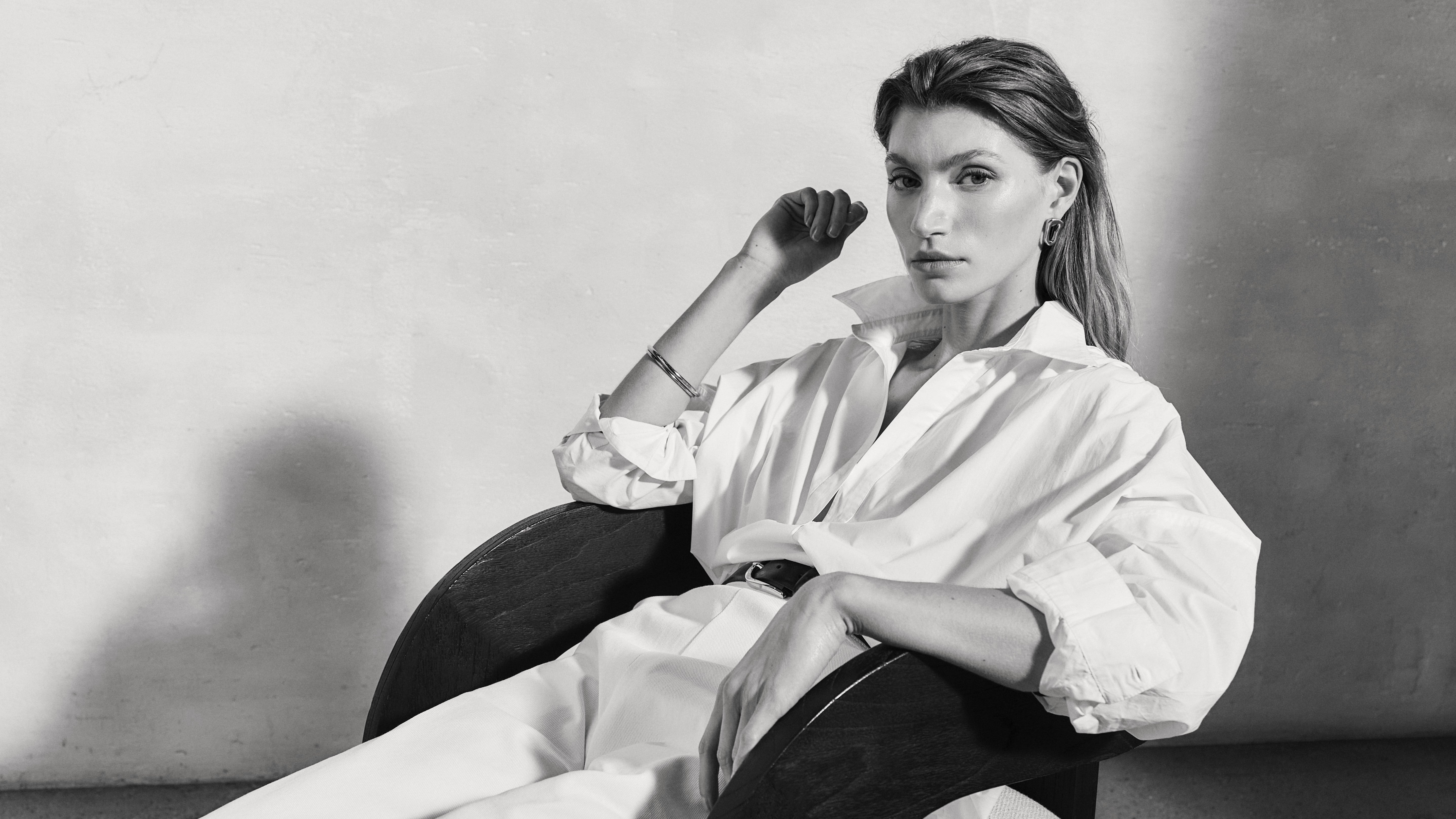Katharine Hepburn on Power Dressing
With the launch of our Spring edit just around the corner, we're taking a moment to reflect on the woman who inspired it. Forever a Mondo muse, Katharine Hepburn was at the top of our moodboard when we designed this collection of gently tailored dresses, jumpsuits and separates - and, of course, trousers - distinguished by menswear-inspired details, from pronounced collars to rolled cuffs.

Haynes Archive:Popperfoto
Think black and navy linen and white cotton-poplin, with soft greens and beiges (a colour often worn by Hepburn) lending subtle tonality. This is soft power dressing that captures a quiet kind of confidence without the need for an overzealous shoulder pad or starched shirt - and we think Ms Hepburn would approve.

'I put on pants 50 years ago and declared a sort of middle road,' said Hepburn, in a 1981 interview with Barbara Walters. Along with Greta Garbo and Marlene Dietrich, the actor had helped popularise the trend for women wearing trousers, which remained something of a radical act until well into the 1950s.

The Philadelphia Story, 1940 (Film Still)
Herpburns' famous wide-leg slacks, of which she owned many, were custom-made at Huntsman; she'd gotten to know the Saville Row tailor after being fitted for 1956 film The Iron Petticoat and remained a lifelong devotee. Into these, she'd tuck a collared shirt, the cut and fabric of which depended on the occasion.

Our new-season Bowler and Letizia shirts pay homage to Hepburn's affinity for shirting, while the Doris trousers are inspired by her signature slacks. Later in life, Hepburn was rarely seen without a pair of suede clogs, which we think would look great with the aforementioned pieces.
Hepburn's on-screen dresses are rarely overtly feminine, but rather architected with sculptural shoulders, precisely tailored or equipped with a collar. The Philadelphia Story (1940) and Summertime (1955) has a whole host of elegant collared high-neck styles that aren't dissimilar to some of Mondo's signature dresses. For Spring, we've added the Kara and Ira shirt dresses to the mix, with Hepburn in mind.

In other film stills, Hepburn's masculine-tinged style is more than evident. The best examples are 1935's Sylvia Scarlett, in which Hepburn's androgynous character accessorises slacks and a sports coat with a bow tie and fedora, and in 1942's Woman of the Year, which sees her wearing a velvet tuxedo suit - 24 years before Yves Saint Laurent's Le Smoking debuted. Now that's what we call a trailblazer - and an enduring Mondo muse.



